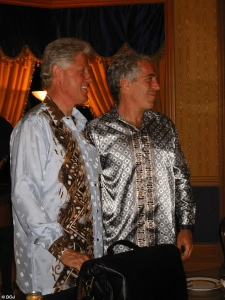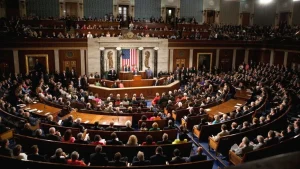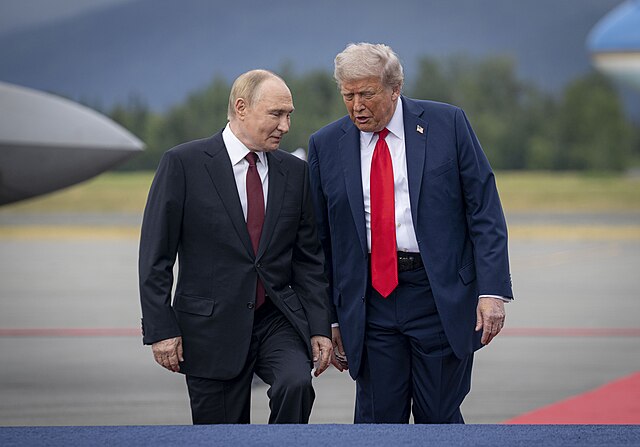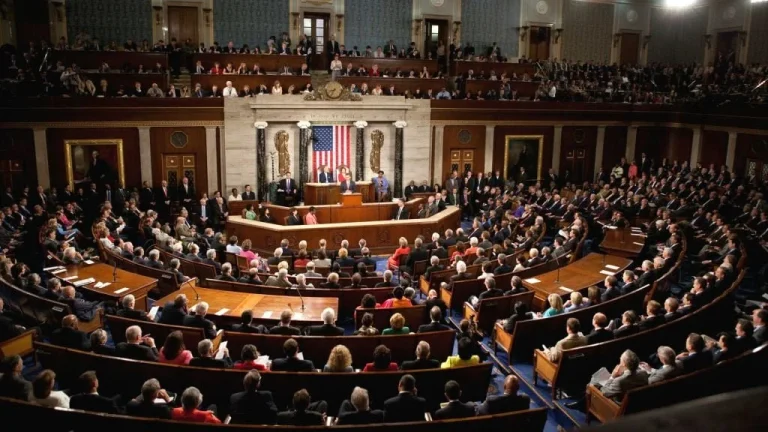On September 10, 2025, tensions in Eastern Europe escalated sharply when Poland confirmed that multiple Russian drones had violated its airspace. Polish Prime Minister Donald Tusk described the incident as a “large-scale provocation” and announced that the drones were intercepted and shot down by Polish forces, with support from NATO defenses. The breach comes as Russia intensifies its aerial assaults on Ukraine, including the most devastating strike on Kyiv since the war began.
Against this backdrop, U.S. President Donald Trump’s muted response to the provocation has drawn international scrutiny. While Trump has repeatedly positioned himself as a key broker for peace in Ukraine, his decision to sidestep a direct question from reporters about Russia’s drones over Poland is fueling debate about U.S. leadership, NATO unity, and the path forward in an increasingly volatile conflict.
Poland’s Warning and NATO’s Alarm
Speaking in Warsaw, Prime Minister Tusk confirmed that Poland’s armed forces engaged the Russian drones after they penetrated NATO airspace. He warned that the situation could escalate further, saying:
“The situation is serious, and no one doubts that we must prepare for various scenarios.”
Poland immediately convened an emergency cabinet meeting, with defense officials describing the incident as an “act of aggression”. NATO spokesperson Allison Hart confirmed that allied air defenses were engaged alongside Poland’s, stressing that the alliance takes violations of its members’ sovereignty seriously.
This marks the most significant breach of NATO territory since the war in Ukraine began in 2022. European leaders expressed alarm that the drones appeared to cross Poland’s border intentionally, not as a navigational error, as Belarus later claimed.
Video Placement Suggestion: Insert a video clip here of Prime Minister Donald Tusk’s emergency press conference in Warsaw. It gives readers firsthand access to Poland’s framing of the crisis.
Trump’s Telling Silence
Reporters in Washington pressed President Trump for comment on the Russian drone incursion. His response—or lack thereof—was striking. When asked directly about Poland’s airspace violation, Trump turned away without answering.
The silence quickly sparked a wave of online criticism and speculation. Commentators accused Trump of avoiding confrontation with Russian President Vladimir Putin, while others suggested he was deliberately leaving diplomatic options open.
One critic wrote on social media: “Trump’s too chickens**t to call out his buddy Putin.” Another user argued that failing to condemn Russia amounted to “a green light for Putin.”
Others, however, urged caution. “Russia is known for taunting the borders,” one commenter noted. “Poland has not been bombed.”
Trump’s silence stood in sharp contrast to his earlier statements on the war, where he threatened tougher sanctions on Russia if it continued its bombardment of Ukraine. With Poland requesting NATO consultations under Article 4, Trump’s muted reaction left allies questioning where Washington stands.
NATO’s Article 4 and the Stakes of Escalation
Poland’s decision to consider invoking Article 4 of the NATO Treaty underscores the gravity of the situation. Article 4 requires NATO members to consult when the territorial integrity or security of an ally is threatened, though it does not mandate military retaliation.
In practice, Article 4 is a step short of invoking Article 5—the alliance’s collective defense clause—but still signals that Poland views the drone incursions as a serious breach requiring coordinated action.
Diplomatic observers note that how the U.S. responds in these early stages will shape NATO’s course of action. Historically, American leadership has been pivotal in guiding alliance responses to Russian provocations. Trump’s silence, therefore, carries significant weight.
Escalation in Ukraine
The drone incursion into Poland comes amid Russia’s largest aerial campaign against Ukraine since the war began. Overnight, missiles and drones struck Kyiv, with one attack hitting a government building for the first time. Ukrainian officials reported dozens of casualties and widespread damage.
European Union foreign policy chief Kaja Kallas described the situation bluntly:
“Russia’s war is escalating, not ending. Last night in Poland we saw the most serious European airspace violation by Russia since the war began, and indications suggest it was intentional, not accidental.”
Moscow dismissed the accusations as “groundless,” while Belarus claimed the drones had merely lost their track and drifted across borders. Few in Europe found this explanation credible.
International Response
European leaders were quick to condemn Russia’s actions and to urge NATO unity. British Prime Minister Sir Keir Starmer called the incursion “an extremely reckless move by Russia” and warned that it highlighted “Putin’s blatant disregard for peace and the constant bombardment innocent Ukrainians face every day.”
German Chancellor Annalena Baerbock echoed those concerns, stressing that NATO must remain resolute in defending its members while avoiding reckless escalation.
Across the Atlantic, however, Trump’s silence has become the focal point. Critics argue that Washington’s ambiguity risks emboldening Moscow, while supporters contend that restraint could prevent NATO from being dragged into direct war with Russia.
Video Placement Suggestion: A strong spot here for a video showing European leaders’ statements (e.g., Starmer, Kallas) reacting to the Polish incident. This would balance Trump’s silence with visible condemnation from allies.
The Politics of Trump’s Response
Analysts say Trump’s silence may be politically calculated. Domestically, Trump has campaigned on a platform of ending the war in Ukraine through negotiations and has criticized past administrations for what he calls “blank check” military aid to Kyiv. A harsh condemnation of Russia, some argue, could complicate his push for ceasefire talks.
Others, however, warn that muted responses risk signaling weakness to Moscow. Former NATO official James Stavridis commented, “If the U.S. does not clearly denounce incursions into NATO airspace, it sets a dangerous precedent. Ambiguity in the face of aggression is not deterrence.”
The debate reflects the broader tension between Trump’s pledge to reduce American entanglement abroad and NATO’s reliance on firm U.S. leadership in deterring Russian aggression.
A Divided Public
American and European public opinion remains sharply divided. Some polls suggest growing war fatigue, with citizens favoring negotiations over escalation. Others, particularly in Eastern Europe, view Russia’s actions as existential threats that demand strong military deterrence.
On social media, the debate rages. Some accuse Trump of shielding Putin, while others applaud his restraint as a way to avoid wider war. The polarized reactions underscore how deeply the conflict has reshaped global politics and public sentiment.
What Comes Next
With Poland stabilizing its air defenses and NATO on high alert, the next moves from Washington and Moscow will be critical. If Trump continues to remain silent, allies may push forward with coordinated sanctions and military reinforcements without explicit U.S. leadership.
If, however, Trump issues a forceful statement condemning Russia, it could signal renewed American commitment to NATO and deter further provocations.
For now, uncertainty reigns. The combination of Russian escalation, NATO’s deliberations, and Trump’s silence sets the stage for a pivotal moment in transatlantic relations.
Conclusion
The Russian drone incursion into Poland marks a dangerous new phase in the Ukraine conflict, testing NATO’s resolve and highlighting the stakes of U.S. leadership. While Poland and other allies have responded with urgency, Trump’s silence has raised questions about Washington’s willingness to confront Moscow directly.
As NATO debates its next steps, the world watches closely. The balance between deterrence and diplomacy has rarely been more delicate, and Trump’s next words—or lack thereof—may shape the trajectory of the conflict.
Video Placement Suggestion (Final): At the end of the article, embed a recap video summarizing the drone incursion, NATO’s response, and Trump’s silence. This would serve as a closing context piece for readers who want a quick overview after the in-depth reporting.

James Jenkins is a celebrated Pulitzer Prize-winning author whose work has reshaped the way readers think about social justice and human rights in America. Raised in Atlanta, Georgia, James grew up in a community that instilled in him both resilience and a strong sense of responsibility toward others. After studying political science and creative writing at Howard University, he worked as a journalist covering civil rights issues before dedicating himself fully to fiction. His novels are known for their sharp, empathetic portraits of marginalized communities and for weaving personal stories with broader political realities. Jenkins’s breakout novel, Shadows of Freedom, won national acclaim for its unflinching look at systemic inequality, while his more recent works explore themes of identity, resilience, and the fight for dignity in the face of oppression. Beyond his novels, James is an active public speaker, lecturing at universities and participating in nonprofit initiatives that support literacy and community empowerment. He believes that storytelling is a way to preserve history and inspire change. When not writing, James enjoys jazz music, mentoring young writers, and traveling with his family to explore cultures and stories around the world.







